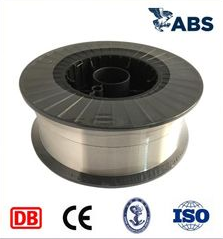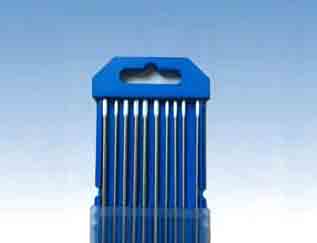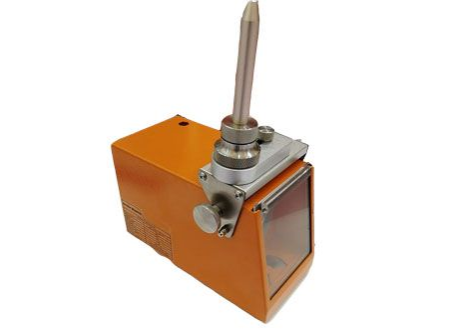Joining metals together through welding gives you several options for the best method. Among your choices are MIG and TIG welding. The MIG vs TIG welding debate has been a popular one in the manufacturing industry for some time, and we’re here to provide the facts for each type of welding. Each has specific benefits in certain situations. If you ever wondered what the difference is between MIG and TIG welding, this guide will cover everything you need to know.
MIG vs TIG Welding
Both MIG and TIG welding create a weld by heating a metal surface with an electric arc. The difference lies in how the arc is used to join the metal surfaces. MIG welding uses a consumable electrode filler that is melted by the arc to produce a weld. TIG welding does not require a filler material, instead of relying on a Tungsten tip to heat and join the metal surfaces directly.
What Is MIG Welding?
MIG welding is an acronym for metal inert gas. This process also goes by the name gas metal arc welding (GMAW). Most welders learn this process first because it combines versatility with ease of use. Most metals and alloys adapt readily to the process.

Aluminum Welding Wire
The inert gas portion of the name comes from the fact the arc does not react to the oxygen in the atmosphere. A shielding gas surrounds the electric arc to prevent it from acting outside its designated area. This gas helps to increase the safety of MIG welding.
The welder uses a consumable electrode in the form of a metal filler. This metal will melt to connect the pieces of metal the welder wants to join. The type of electrode filler you use depends on the materials you need to join and their properties.
MIG welding offers a straightforward process compared to other forms of welding. Its simplicity also makes the process quick, so it’s ideal for last-minute projects, especially if you must conjoin thicker metals than TIG welding can handle.
Unlike other forms of welding that have a consumable filler, such as stick welding, MIG uses more filler material, producing less waste. For example, in stick welding, up to 25% of the filler electrode goes to waste as an unused stub. With MIG welding, for every 50 parts, 49 of those will deposit onto the metals as filler, leaving less than 2% as wasted filler.
MIG welding also offers the benefit of speed. The process takes much less time compared to stick or TIG welding. For applications that require the fastest weld possible, MIG welding may be the best choice. However, don’t forget about the metal thickness and appearance of the weld. When connecting thicker pieces, MIG offers an advantage over TIG. The filler used for MIG welding better adheres the metal parts together and thicker metal takes longer to heat for TIG to work.

Zirconiated Tungsten Electrode
MIG Welding Process
The process of MIG welding starts with thoroughly cleaning the metal surfaces you need to connect. Any dirt or contamination on the surface could prevent the filler from adequately adhering to the metal. Even dirt under the metal clamps holding down the parts could impede electrical current through the system, reducing the effectiveness of the weld.
Metal component repairs
Automotive repairs and manufacturing
Trailer hitches
Farm equipment
Construction welding
Pipe welding
Underwater welding projects
Railroad track repair
Shipbuilding
These options for MIG welding show how versatile the process is. As long as your project does not need to look perfect, requires speed for finishing, or has thicker metals that TIG welding won’t work for, you can choose MIG for your welding.

Tungsten Grinder
What Is TIG Welding?
TIG welding is an acronym for tungsten inert gas. Its other name is gas tungsten arc welding or GTAW.
The name for the process comes from the tungsten electrode inside the welding gun. In MIG, this electrode is a consumable metal that creates the filler. Tungsten, however, does not melt as readily as other materials. It conducts the arc of electricity directly to the components you need to join.
Unless you touch the tungsten electrode to the weld pool or materials, you will not consume it during the process. Should the tungsten touch the metal, an incident known as dipping, you will need to grind off the tip. How often you accidentally dip the tungsten into the metal determines the life of the tip.
While MIG uses a filler, TIG does not require one. Its ability to conjoin two metals without a filler means the parts have a cleaner joint without defects from misused filler material.
The TIG process requires more skill than MIG, which means only experienced welders will use this method. Since TIG requires two hands to weld, in instances that use a filler, the welder controls the current using a foot pedal. Unless the welder regulates the current properly, the metals could get too hot. If the metals overheat during welding, they could crack from the stress.
The precision required of TIG welding considerably slows the process. TIG welding takes at least twice as long compared to a similar project using MIG welding. That time investment, though, ensures the product from TIG welding has a smooth, precise weld between a pair of metal sheets.
Since TIG welding requires you to heat the metal pieces you need to join, the parts need to have a thin enough design to allow for the current to pass through them to reach the proper temperature. Very thick pieces require the filler used in MIG welding for a more secure bond.










